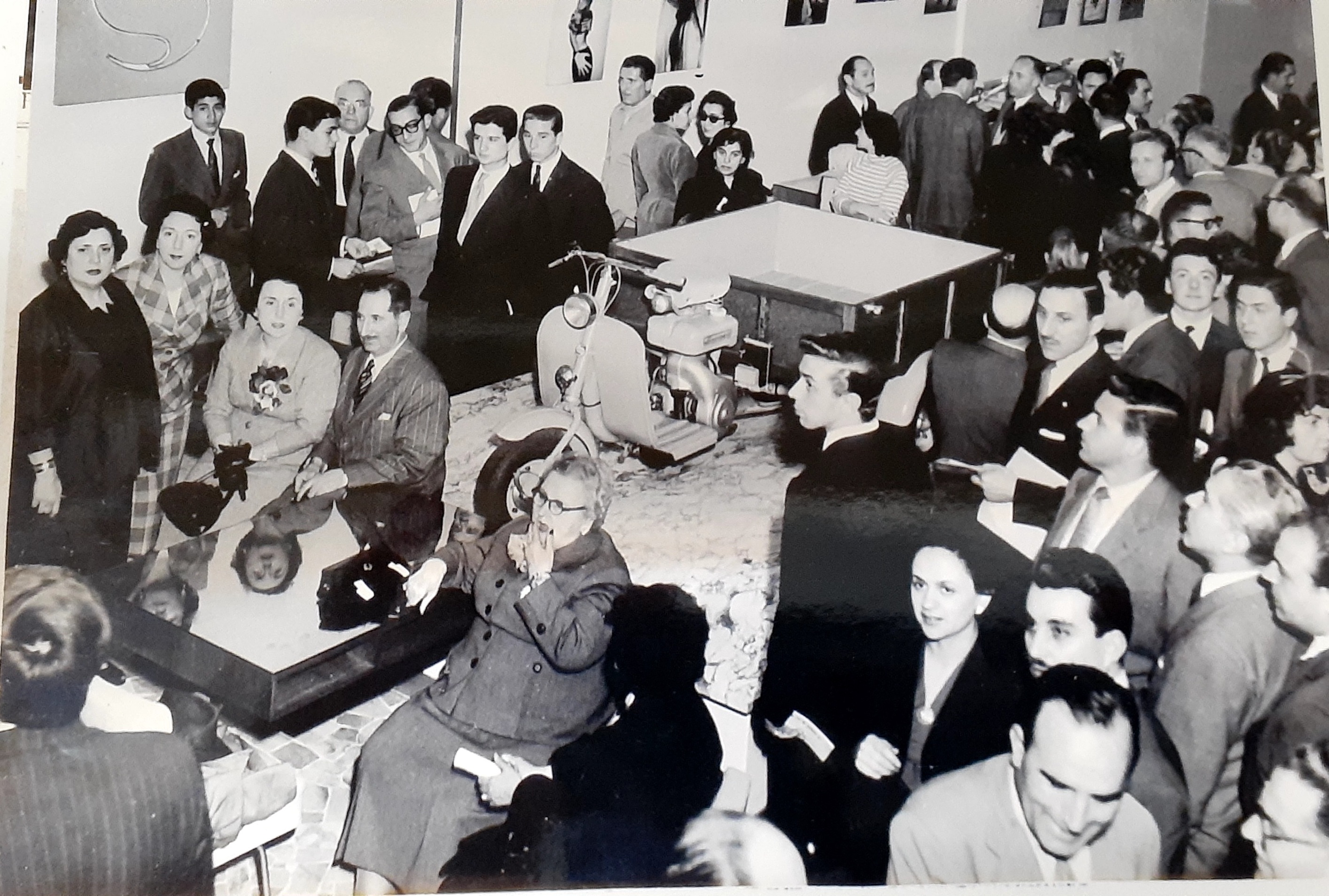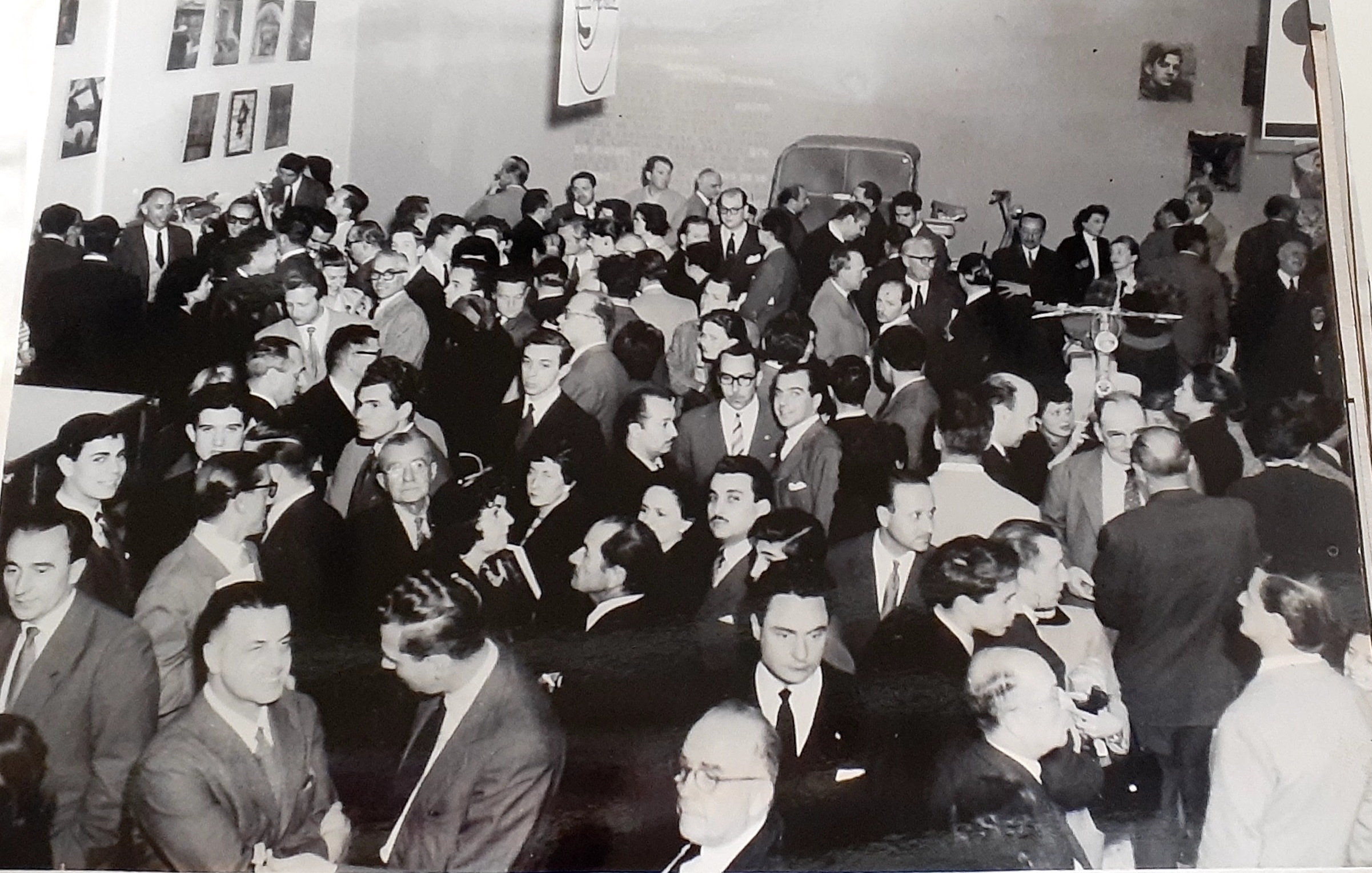Archive
La Carpeta de los Diez
- La Carpeta de los Diez
The Folder of the Ten
- Photo LabAssociation
In 1953, a group of local and exiled photographers gathered and founded the collective work known as La Carpeta de los Diez, a milestone in Argentine artistic avant-garde.
Word Count: 27
Annemarie Heinrich's photo studio, Av. Callao 1475, Recoleta, Buenos Aires (meeting place); Galería Picasso, Calle Florida 363, Buenos Aires (place of exhibition); Salón Kraft, Calle Florida 681, Buenos Aires (place of exhibition); Salón Siam, Calle Florida 936, Buenos Aires (place of exhibition); Salón Harrod’s, Calle Florida 877, Buenos Aires (place of exhibition); Office of Foreign Affairs, Buenos Aires (place of exhibition); Opera Theatre, Av. Corrientes 860, Buenos Aires (place of exhibition).

A page from the Folder of the Ten (© Archive Annemarie Heinrich, Buenos Aires). 
Photo of exhibition opening on 24 October 1956 at the Salón Kraft, Calle Florida 681, possibly taken by Annemarie Heinrich, Rolleiflex, Archive Annemarie Heinrich (© Archive Annemarie Heinrich, Buenos Aires). 
Photo of exhibition opening on 24 October 1956 at the Salón Kraft, Calle Florida 681, possibly taken by Annemarie Heinrich, Rolleiflex, Archive Annemarie Heinrich (© Archive Annemarie Heinrich, Buenos Aires). 
Photo of exhibition opening on 24 October 1956 at the Salón Kraft, Calle Florida 681, possibly taken by Annemarie Heinrich, Rolleiflex, Archive Annemarie Heinrich (© Archive Annemarie Heinrich, Buenos Aires). Pestarino, Julieta. "Apariciones del grupo fotográfico La Carpeta de los Diez en los últimos quince años del mercado del arte en Buenos Aires." H-ART. Revista de historia, teoría y crítica de arte, no. 4, 2019, pp. 165–182, doi: http://dx.doi.org/10.25025/hart04.2019.09. Accessed 8 February 2021.
Word Count: 46
Archive Annemarie Heinrich, Buenos Aires.
Speech at the opening of the 1st Exhibition at Galería Picasso, Florida 363, Buenos Aires, 2 September 1953. Archive Annemarie Heinrich, Buenos Aires.
Karp Lugo, Laura. Interview with Alicia Sanguinetti. (Studio Annemarie Heinrich, Buenos Aires, 2018).
Word Count: 38
My deepest thanks go to Alicia Sanguinetti.
Word Count: 7
- 1953
- 1959
Pinélides Fusco, Eduardo Colombo, Augusto Valmitjana, Annemarie Heinrich, Hans Mann, Max Jacoby, Giuseppe Malandrino, Juan Di Sandro, Georges Friedmann, Alex Klein, Ilse Mayer, Anatole Saderman, Fred S. Schiffer, Boleslaw Senderowicz.
- Buenos Aires
- Laura Karp Lugo. "La Carpeta de los Diez." METROMOD Archive, 2021, https://archive.metromod.net/viewer.p/69/2950/object/5145-11259268, last modified: 12-05-2021.
-
Annemarie HeinrichPhotographerBuenos Aires
Annemarie Heinrich is one of the photographers that represent modern photography in Argentina, she co-founded the artistic group La Carpeta de los Diez (The Folder of the Ten) in 1953.
Word Count: 29
Anatole SadermanPhotographerBuenos AiresAnatole Saderman is one of the photographers that represent modern photography in Argentina. He was involved in the artistic group La Carpeta de los Diez (The Folder of the Ten).
Word Count: 30
Self-Portrait with Camera and Mirror SpherePhotographBuenos AiresIn this photograph, Annemarie Heinrich, a German photographer who immigrated to Argentina in 1927, captures the image of her own physical appearance while demonstrating her technical virtuosity and her aesthetic search.
Word Count: 30